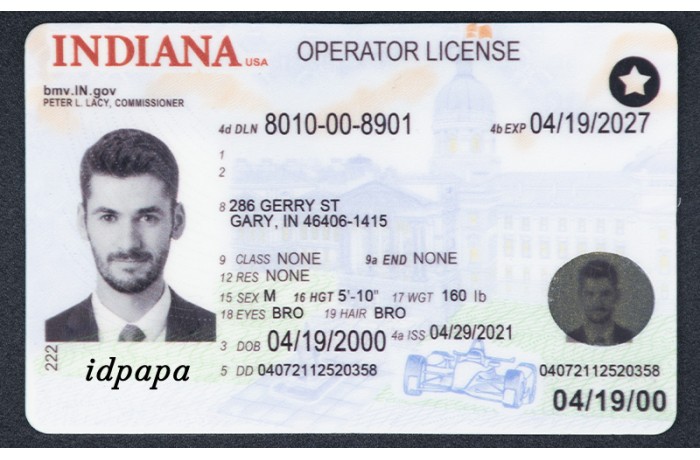Can You Really Get Away With Scannable copyright at Dispensaries?
Can You Really Get Away With Scannable copyright at Dispensaries?
Blog Article

Trying to sneak in dispensary security with a scannable copyright is a risky move. While some users might think they can fool systems, the reality is that dispensaries are getting more vigilant forged documentation. High-tech scanners are becoming the norm, able to spot inconsistencies and imperfections that human eyes might miss.
Getting caught with a copyright can have serious consequences, including hefty fines, potential jail time, and a permanent restriction from the dispensary. It's simply not worth jeopardizing your legality over a questionable piece of identification.
Illegitimate IDs: Reddit's Top Tips and Tricks Exposed
Yo homies, ever wondered how some people manage to roll with forged scannable IDs? Well, Reddit's got your back. There are fake scannable california id a bunch of threads where folks share their knowledge on making those IDs look so real, even the bouncers get fooled. It's pretty intense, but remember, using copyright IDs is illegal and can land you in hot water. So, while it's fascinating to see how these things are made, don't go trying it yourself.
- Instead focusing on legitimate ways to have fun and enjoy yourself.
- Be aware that getting caught with a copyright can have big repercussions.
Stay out of trouble, and don't be a moron.
Cannabis Dispensary Protection: The Threat of Advanced Forged Identification
With the acceptance of cannabis throughout the UK, a new wave has emerged: the use of advanced scannable copyright at dispensaries. These copyright documents are becoming increasingly ubiquitous, raising concerns about dispensary security and compliance. While some dispensaries have implemented comprehensive ID verification procedures, it's unclear how effective these measures are against fraudulent IDs that can be easily decoded by point-of-sale terminals.
The increasing availability of scannable copyright poses a significant threat to dispensaries. It enables underage individuals to obtain cannabis without authorization, potentially leading to regulatory consequences for both the dispensary and the underage buyer. Furthermore, it can be used by individuals with malicious intent to commit fraud.
- To effectively combat this problem, dispensaries must invest in advanced ID verification technology that can reliably detect counterfeits.
- Additionally, staff training on ID verification procedures is essential to ensure that each customer is properly checked.
- Increased collaboration between dispensaries, law enforcement agencies, and regulatory bodies can also help to address the spread of scannable copyright.
Scannable
When it comes to copyright identification cards, the technology behind them is constantly evolving. Recently/Lately/Currently, a new breed of copyright has emerged that claims to be scannable/readable/detectable by standard scanners. This begs the question: do these scannable copyright really work? The answer is complicated and depends on a multitude of factors, including the sophistication of both the copyright and the scanner used to verify it.
copyright have traditionally relied on clever design/construction/manipulation to mimic real IDs. They may use high-quality paper, printing techniques, and even embedded holograms/images/features. However, modern scanners are becoming increasingly advanced/sophisticated/complex, employing sophisticated algorithms and infrared/ultraviolet/visible light detection to identify discrepancies.
Despite this ongoing technological arms race, scannable copyright may still find success by exploiting vulnerabilities/weaknesses/flaws in the system. These could include outdated scanner software, insufficient training of verification personnel, or even deliberate manipulation/misuse/circumvention of the scanning process itself.
- Therefore/Consequently/As a result, it's crucial to remember that no ID, regardless of its claimed scannability, is foolproof. Verifying identification should always involve a multi-layered approach, combining technology with human judgment/expertise/analysis for the most reliable results.
Ultimately/In conclusion/Finally, the effectiveness of scannable copyright remains a dynamic and evolving landscape. As technology advances on both sides, it's essential to stay informed about the latest developments and employ comprehensive verification strategies to mitigate the risks associated with copyright identification.
Does a Scannable copyright Let You Into Any Dispensary?
Think a slick scannable copyright is your golden ticket to any dispensary? Think again. While some individuals may try, the reality is that dispensaries are incredibly vigilant about IDchecking. They employ state-of-the-art tools to spot copyright, and budtenders are trained to scrutinize for any signs of suspicion. Don't risk your freedom with a phony ID; always carry a valid form of proof.
- Here are some tips to avoid getting caught with a copyright:
Be aware that dispensaries are serious about compliance. Trying to circumvent these rules can have major repercussions. Stay safe and lawful by using a valid ID.
Scannable Fakes vs. Real IDs: What Dispensaries Are Looking For
The cannabis industry is booming, but with that growth comes a rise in fraudulent activity. Dispensaries need to be extra careful about verifying customer identification to stay aboveboard. copyright are becoming increasingly sophisticated, making it tough for dispensaries to tell the distinction between a copyright ID.
There's no simple solution, but dispensaries are using multiple methods to combat ID fraud. Some common techniques include using UV scanners to detect hidden features on real IDs. Others are utilizing advanced technology that can compare information from the ID with government databases.
It's crucial for dispensaries to stay up-to-date on the latest copyright techniques. They should also educate employees on how to properly inspect IDs and identify potential falsifications.
Report this page